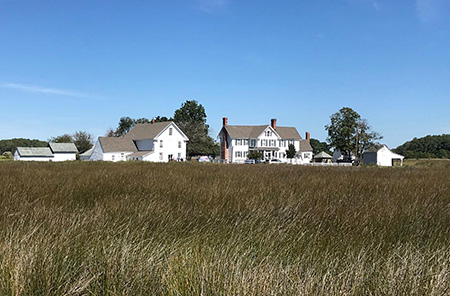 Medicine Hill, Dorchester County. Photo by Heather Barrett/MHT Staff photo.
Medicine Hill, Dorchester County. Photo by Heather Barrett/MHT Staff photo.
Research and survey activities lay the groundwork for all other preservation actions at the Maryland Historical Trust
(MHT). To preserve and interpret our historic and cultural resources, we must understand the building or site and
place it in its context. The Archaeological and Architectural Research Programs at MHT oversee the identification
and documentation of significant historic resources across the state, creating a record of a site's past and
present appearance, history, and significance.
While some research and survey projects are developed and undertaken by MHT staff, the majority are joint projects
in partnership with local government agencies, private nonprofit organizations, or museums throughout the state.
Documentation efforts may include research in local, state, and federal repositories, survey of archaeological
sites and historic structures, or the analysis of historic building materials. These efforts can include city
or countywide surveys, the creation and testing of predictive models for locating historic and prehistoric
archaeological sites, or targeted research to assist in the preservation of a specific building. In the past,
research and survey projects have documented a wide range of historic resources including architect-designed
commercial and residential buildings, agricultural buildings and landscapes, small crossroads villages, mill
complexes, bridges, and threatened archaeological sites in every region of Maryland.
Both state and federal grant funds support these activities, including the
Historic Preservation Non-Capital Grant Program administered
jointly by the Architectural and Archaeological Research Programs. The data collected is maintained in
the Maryland Inventory of Historic Properties and field and research reports in
the Maryland Historical Trust library, and is also incorporated into
Medusa, our cultural resource information system.